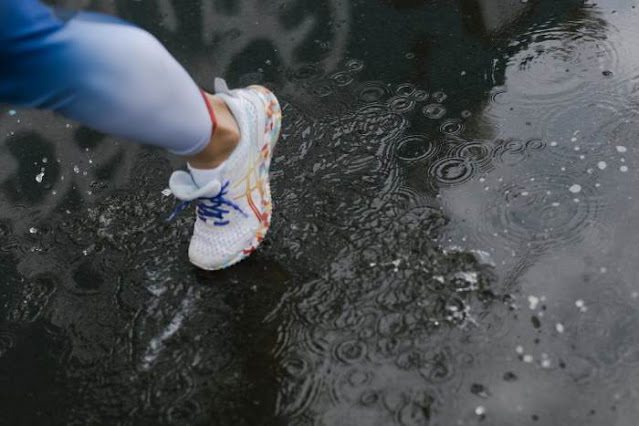The Difference Between Walking and Running Shoes

Introduction
Choosing the proper footwear is essential for any physical
activity, whether walking, running, or combining both. While walking and
running may seem similar, the two activities have distinct biomechanical
differences that require specific shoe features for optimal performance and
comfort. This item will explore the key differences between walking and running
shoes, focusing on their design, cushioning, flexibility, and stability.
Understanding these differences will help you decide when to select footwear
for your preferred activity.
Biomechanical Differences: Walking vs. Running
Walking and running involve different biomechanics and
movement patterns. Walking is a low-impact activity with at least one foot on
the ground at all times while running involves a moment of flight when both
feet are off the ground. These differences influence the design and features of
walking and running shoes.
Design Differences
Walking shoes are designed with a more flexible sole to
accommodate the rolling motion of the foot, from heel strike to toe-off. They
typically have a rounded heel and a smooth outsole to support a natural
heel-to-toe transition. On the other hand, running shoes have more cushioning
and stability features to absorb the impact of each foot strike and provide
support during the flight phase.
Cushioning and Shock Absorption
Walking shoes provide ample cushioning in the midsole to
provide shock absorption and support for the feet. The cushioning is typically
softer and more forgiving to accommodate the repetitive heel-to-toe walking
movement. Running shoes have more advanced cushioning systems, such as air or
gel pockets, to absorb the higher impact forces generated by running. The
cushioning is usually firmer and more responsive to provide energy return and
reduce the risk of injury.
Flexibility and Support
Walking shoes offer a good balance of flexibility and
support. They allow for natural foot movement and stability during the walking
gait cycle. On the other hand, running shoes prioritize flexibility to
accommodate the foot's bending and rolling motion during the running stride.
Additionally, running shoes often incorporate features like medial posts or
stability technologies to support and prevent excessive inward or outward foot
motion.
Weight and Breathability
Walking shoes are typically lighter in weight compared to
running shoes, as walking is a lower-impact activity with less need for
additional support or cushioning. Running shoes may be slightly heavier due to
the additional features designed to absorb impact forces and enhance
performance. Both shoes should be breathable to keep the feet cool and dry
during exercise.
Shoe Longevity
Running shoes generally have a shorter lifespan than walking
shoes due to the increased impact and wear they endure. The cushioning and
support systems in running shoes tend to wear down faster with regular use. Replacing
running shoes every 300-500 miles is recommended, while walking shoes can last
longer, usually between 500-700 miles. Regular inspection of shoe condition and
listening to your body's feedback are essential to determine when to replace
your shoes.
Conclusion
Choosing the proper footwear for walking or running is
crucial to optimize comfort and performance and reduce the risk of injury.
Walking shoes prioritize flexibility, support, and cushioning suitable for repetitive
heel-to-toe motion. In contrast, running shoes focus on shock absorption,
stability, and flexibility to accommodate the higher impact forces and foot
movement during running. Understanding the biomechanical differences between
walking and running and considering factors such as design, cushioning,
flexibility, support, weight, breathability, and shoe longevity will guide you
in selecting the ideal footwear for your preferred activity, enhancing your
overall experience and well-being.



Comments
Post a Comment